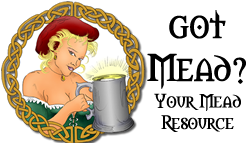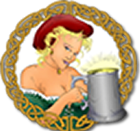Hello everyone. I'm new to mead and just bottled my first batch of blackberry mead about 2 weeks ago. I've been brewing beer for a few years and making wine for about 6 months.
When I bottled my mead is was beautifully clear. It was a 1 gallon batch and I didn't add anything to stabilize it before bottling.
Now 2 weeks after bottling I'm getting a brown haze in the bottle. I used star San to sanitize all my equipment and bottles. It seems to be settling at the bottom of the bottle. All the bottles are stored on their side in a dark box
The question is, what should I do? Leave it alone? Will it affect the flavor?
Thanks in advance. Brian
When I bottled my mead is was beautifully clear. It was a 1 gallon batch and I didn't add anything to stabilize it before bottling.
Now 2 weeks after bottling I'm getting a brown haze in the bottle. I used star San to sanitize all my equipment and bottles. It seems to be settling at the bottom of the bottle. All the bottles are stored on their side in a dark box
The question is, what should I do? Leave it alone? Will it affect the flavor?
Thanks in advance. Brian





